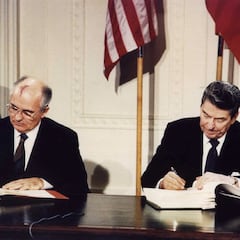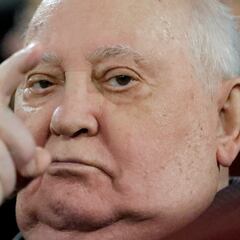How did Gorbachev change the Soviet Union and how did perestroika open up the country?
Mikhail Sergeyevich Gorbachev set in motion reforms that would open up the Soviet Union but eventually lead to its collapse and that of the Communist party.

Mikhail Sergeyevich Gorbachev was a loyal Communist but saw that his country, although a superpower, needed to reform or be doomed to become a second-rate power. He instituted the policy of perestroika, to reform the economy and government, as well as the policy of glasnost, or greater openness of the political system and dissemination of information, to prevent that from happening.
However, restructuring a society and system that had been entrenched for seven decades was a herculean task that would make him a hero outside his country but seen as responsible for his country’s demise within. The reforms led to a period of tumult that would see the collapse of Communism in Europe and the breakup of the Soviet Union.
Gorbachev goes from peasant to General Secretary of the USSR
Gorbachev was born to peasants 2 March 1931 in Privolnoye, a small farming village in the Stavropol region of the Caucasus. He grew up in Stalinist Russia a loyal Communist, joining the youth wing of party as a teenager. Age nineteen, he went to Moscow to study law at the Moscow State University. There he was able to read books that were off limits to others under communist censorship.
He rose through the ranks in the Communist party until in 1985 he was named the General Secretary of the Communist Party of the Soviet Union. He quickly secured his place in the top job by replacing 14 of the 23 heads of department in the secretariat of the Politburo in his first year. This move allowed him to put in place desired reforms he had in mind without being removed by the Politburo.
Mikhail Gorbachev — the former General Secretary of the CPSU, the first and only president of the Soviet Union, and the man who brought the Cold War to an end — has died. A look at his life in photos:https://t.co/Aqtw7KExw1
— Meduza in English (@meduza_en) August 31, 2022
How Gorbachev changed the Soviet Union through perestroika
Concerned about corruption, the country’s low productivity and lack of work ethic resulting in low quality goods and a lack of them for citizens, Gorbachev set about implementing the policy of perestroika to reform the political and economic structure of the country.
He wanted to increase production maintaining the centrally planned economy while bringing in the labor force into mix. His policies also created limited entreprenuership, allowing collective farms to sell a portion of their production directly to shops instead of relying on the state to handle all of the distribution.
In politics, the reforms shifted power away from the Politburo and to soviet legislative bodies. They also allowed for multiparty elections that saw the iron grip of the single party loosened.
So that the public could see the need for the reforms taking place, Gorbachev put in place the policy of glasnost, or “openness”. This allowed citizens access to books and movies that had been banned in the country. It also allowed for greater debate and freedom of expression. This was very popular with the public but caused alarm and brought to light uncomfortable truths about the past too.
Mikhail Gorbachev was a one-of-a kind statesman who changed the course of history.
— António Guterres (@antonioguterres) August 30, 2022
The world has lost a towering global leader, committed multilateralist, and tireless advocate for peace.
I’m deeply saddened by his passing. pic.twitter.com/giu2RHSjrQ
The USSR unravels
Related stories
Unfortunately for Gorbachev, the reforms were going too far for some and not far enough for others. The citizens became discontent as the shelves were still bare and the populous wasn’t seeing the economic benefits. Elections were held across the soviet controlled countries in Europe and one after another the Communist regimes fell.
In the Soviet Union itself, the leaders of Belarus, Russia and Ukraine agreed without Gorbachev’s knowledge to dissolve the USSR. He would learn via a phone call from Stanislav Shushkevich, the president of Belarus who was at a dacha in the Belovezha Forest meeting with Ukrainian President Leonid Kravchuk and Russian President Boris Yeltstin.


